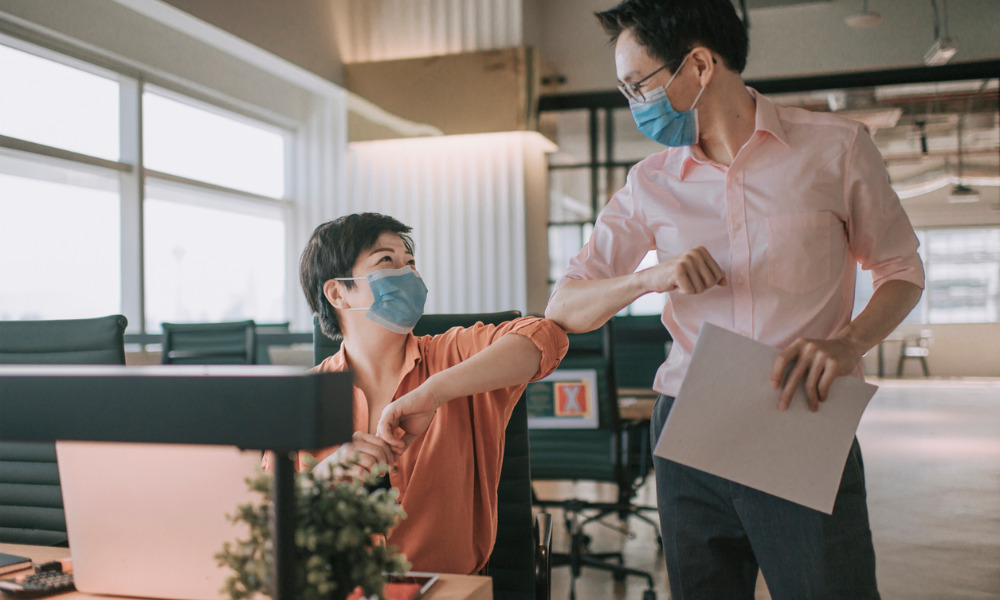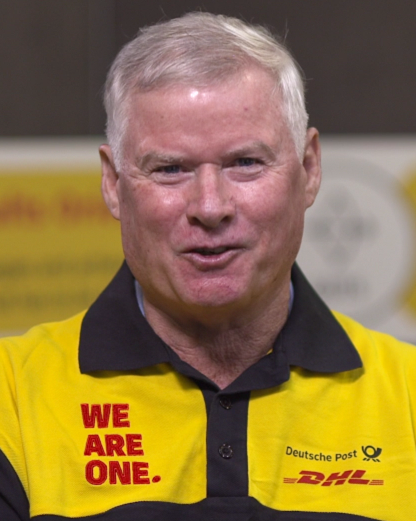
Seems like every time we get close to heading back in, the virus comes back in full force

April 7th marked the one-year anniversary of Singapore’s Circuit Breaker. The mandated shift to remote working however was announced more than a week before that, when the state’s manpower minister revealed tough penalties for businesses that could function remotely but refused to implement flexible arrangements.
Singapore’s lockdown lasted about two months and since then masks have become mandatory in public, and social distancing, the norm. We’ve also been spending a lot of our time at home. Before phase 3 in December, we were at home for work and leisure time. This year, we’re more or less able to go about our lives though with restrictions in place and it’s been great, until the COVID situation changed once again and we had to go back to phase 2.
With all the changes in the past year, it’s impossible to accurately pin down when discussions about a proper return to workplaces began. If anyone's taking any bets, it’s likely in May 2020 when we first got wind of the imminent end of the Circuit Breaker.
Since then, there have been lots of crystal-ball gazing and theories about the ‘how’ and ‘when’ a safe return to work would actually take place. Companies assembled their leaders into committees and consulted health and safety experts to design a feasible return-to-work strategy. Unfortunately, most of the plans had to be chucked out and redesigned due to constant changes in regulations.
Which reminds us of the ominous foreshadowing by Minister Chan Chun Sing in May last year. He said: “For those who are able to work from home, we expect them to continue for the foreseeable future.” One year on, despite experiencing relative success in containing the virus and revealing plans to allow more employees back into offices, we find ourselves facing similar conditions like last year. Mask use remains mandatory and social distancing, or some version of it, is still being enforced in public. Most of all, we’re still largely working from home with no clear sight of when everyone can fully go back to the office.
Read more: Will you make remote work a permanent policy?
Although countless studies in Singapore have suggested that employees want to work from home for the long haul, many miss being in a physical office environment. Employers, however, were probably the most excited when the government said we could get 75% of staffers back in workplaces by April 2021. Alas, the pandemic had other plans and we were rudely reminded that the virus was still in the air and was forced back into phase 2 in May.
 Declan J Byrne, SVP of HR, APAC at DHL Supply Chain shared just how frustrating it was when he first heard the news. “Last week we were all ready to come back to the office,” he told HRD. “By May, we’ve done three weeks of communication, done all of the announcements, and we were really excited [about returning].
Declan J Byrne, SVP of HR, APAC at DHL Supply Chain shared just how frustrating it was when he first heard the news. “Last week we were all ready to come back to the office,” he told HRD. “By May, we’ve done three weeks of communication, done all of the announcements, and we were really excited [about returning].
“We were building up everybody and put out free coffee sessions, making sure they could come in [at] whatever suitable time. We’ve set everything up, cleaned everything and made the place look really nice. Then we had to call a meeting and get everyone on it and say, ‘Really sorry, guys, we’re not coming back.’”
But maybe the pandemic has trained us to roll with the punches, because Byrne was laughing off the whole situation. “It’s funny that after all the preparations for coming back to 75% and then, bang! It all changes and we’re back to 50% and then it’s back to A & B [split teams],” he said. “So it was a chump but we handled it. We were prepared.”
He put down the ability to adapt to constant changes amidst COVID to a great communication strategy and the internal committee’s continued efforts to plan for all the ‘what ifs’ as much as possible. “With regards to a return, I think it’s really important to give enough notice [to staff] and have lots of communication,” he said.
Regardless of the ongoing situation, he said that leaders can plan their strategies based on things within our knowledge and prepare contingencies for unknown factors like sudden changes in the COVID situation. “The 10% [things that we don’t know about] is a challenge,” he said. “Once we know [everything], we’ll sit down and look at different strategies or how to tactically deal with something that we didn’t consider.”
Read more: Is remote work for you? Key factors to consider

However, since BHG runs a retail business, they have had to comply with very different sets of rules for the different groups of employees. They have corporate staff based in the office, warehouse workers as well as frontline employees manning their department stores across Singapore. This sounds like a nightmare compliance-wise. To handle the varying set of restrictions for all three groups of employees, BHG appointed and relies upon the due diligence of safety management officers (SMO) to manage the situation on the ground.
“If any [new legislation] comes out, they’re the ones who’ll alert the rest of the organisation,” Pinkerton said. That triggers a quick call within the COVID management committee to discuss things like how to respond to the change in restrictions and what timeframe to abide by to ensure compliance of company practices and keep everyone safe no matter where they’re working from. SMOs also help enforce the latest measures across the organisation. “Obviously it is everybody’s responsibility to adhere to legislation, but these are the people that keep on top of the [rules],” she said. “SMOs have been really instrumental in all the stores.”
Read more: Rushing back to the office? Maybe it’s time to slow down
 Then there are companies like Johnson Controls, a global technology firm, who have basically made remote working part of their company policy. Diane Poo, HR lead, Singapore and SEA at Johnson Controls told us that their ‘future of work’ policy allows employees to go fully remote depending on the nature of their work. Staff can still choose to head into the office on some days if they wanted to. The company has even designed the office to accommodate the policy and meet employees’ changing needs. “If it’s not necessary for employees to be in the office, they are allowed to work from home,” she told HRD.
Then there are companies like Johnson Controls, a global technology firm, who have basically made remote working part of their company policy. Diane Poo, HR lead, Singapore and SEA at Johnson Controls told us that their ‘future of work’ policy allows employees to go fully remote depending on the nature of their work. Staff can still choose to head into the office on some days if they wanted to. The company has even designed the office to accommodate the policy and meet employees’ changing needs. “If it’s not necessary for employees to be in the office, they are allowed to work from home,” she told HRD.
The initiative will remain “even beyond COVID”, she said, and when the global situation becomes more stable. She believes the policy has helped employees to get accustomed to the evolving “normal” and reduce the impact of constant COVID-related changes. Additionally, it’s enabled everyone to get used to a truly flexible way of working.
“It gives the flexibility for the uncertainty of up and down,” she said. “The policy [ensures] that we don’t rush back [to the office], even if the government were to say, ‘Okay, tomorrow we can [return]’. To us the recent announcement didn’t make an impact because we still operated as per our policy.”
She acknowledged that the policy and culture shift was largely made possible due to the pandemic. Many businesses and leaders have realised that working from home is possible for almost every job role, including their own. “We've always [thought] working from home was not going to be possible but this time around we have been proven otherwise,” she said. As long as productivity doesn’t take a hard hit, everyone should be able to work in a hybrid manner.
To be clear, she doesn’t have anything against working in a physical office location. She believes it’s all about giving people a choice to figure out what’s best for them. She personally prefers going into the office some of the time. Being one of the many professionals who started a new job during the pandemic, she’s especially missed meeting people and having the chance to get to know her co-workers. She had chosen to go in during her initial onboarding to get more familiar with the office. While she enjoyed those three weeks, and all the other times she heads in, it’s not really been the same. “I started at the company with less than 50% of employees in the office,” she said. “I fear I’m missing out [on human interaction]. Nothing beats having face to face interaction, going out to lunch with colleagues and getting to talk about things outside of work. I definitely miss that.”